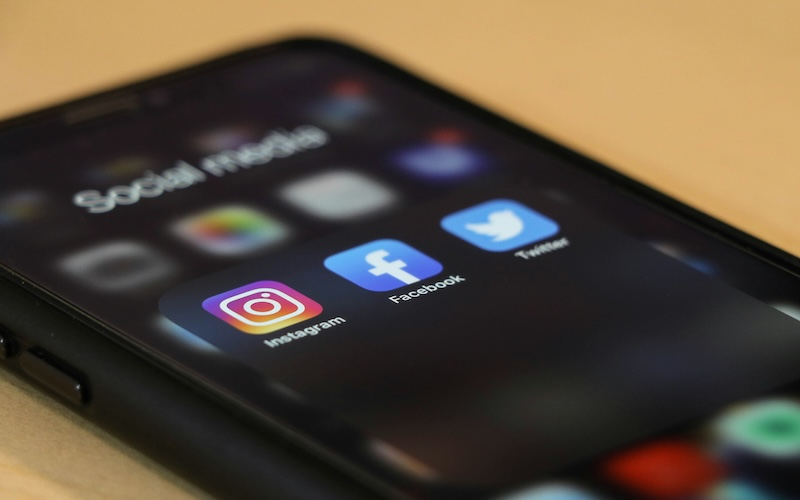50+ Brand Awareness Survey Questions to Improve Your Brand Health

Whether you work for a startup, a scaleup, or an established business, brand awareness surveys can highlight blind spots that could otherwise slow growth.
They show if your campaigns are effective, if customers recognize the values you promote, and if your brand comes to mind first in its category. Without this data, it becomes much harder to make effective brand marketing decisions and allocate your budget effectively.
This guide explores and explains brand awareness surveys – what they are, why they matter, and how to create and analyze them. On the way, you'll find examples of questions, survey designs, and tools (such as Checkbox) that will assist you in gathering and analyzing feedback.
What is a brand awareness survey?
A brand awareness survey is a structured set of questions designed to measure how well people recognize a brand, and then recall it at a later date.
Unlike general marketing indicators, these surveys provide you with first-hand knowledge of whether or not customers can identify your company, grasp your ideals, and relate your name and identity to your products and marketing.
Surveys help businesses make decisions based on evidence. They convert intangible concepts such as "trust" or "recall" into quantifiable indicators to support campaigns that create familiarity and trust.
How do brand surveys contribute to brand strategy development?
Brand surveys provide businesses with information to shape and tailor long-term plans. Rather than relying on intuition, decision-makers can see how customers view the brand, which brand associations come to mind (such as reliability, price level, or innovation), and areas where recognition is lacking. This data is vital when going to market with a company or product, as well as when testing the impact of campaigns.
Insights from a brand awareness survey reveal whether customers link a company with the intended values or if communication needs refining. At the same time, brand survey questions highlight gaps in recall and recognition compared with competitors, guiding teams to improve messaging and allocate resources efficiently.
By making perception measurable, surveys enable organizations to analyze the impact of marketing campaigns, monitor them over the years, and develop strategies in line with the actual customer perception. The outcome is a more coherent brand image and a better basis for future development.
Brand awareness surveys for businesses
Brand awareness surveys matter, as awareness occupies the beginning of the marketing funnel. Without awareness, there can be no consideration, no conversion, and no loyalty.

A properly constructed survey can reveal whether your advertising is hitting the mark, if your identity is being communicated successfully, and how perceptions evolve over time.
The results can identify gaps in visibility and monitor the evolution of reputation in new markets.
How to create a brand awareness survey
Making your brand recognizable has a huge impact on your ability to drive revenue. A recent study by Salsify found that 87% of customers will pay more for products from brands they trust. That's why preparation is key if you want your survey to be a success.
In advance of asking questions, you should know what data you want to gather. Do you want to understand brand recollection, recognition, trust, positioning or a combination of all four. Having a focus ensures that the data you get from your survey is useful.
These steps will help you make sure your survey provides actionable insight:
- Note down your audience and objectives in a concise statement.
- Select aided, unaided, or both awareness questions depending on your ambitions.
- Write clear and concise questions that do not use jargon or fluff.
- Keep the survey to 15–20 questions so that it's not time-consuming for respondents.
- Pilot test with a small sample to identify ambiguous wording and logical gaps.
- Deploy and measure responses with the demographic filters to identify patterns.
Aided questions provide respondents with options to choose from, while unaided questions ask respondents to answer questions without a prompt.
By aligning survey structure with real-world intent, you'll create an efficient brand awareness questionnaire that blends strategic intent with practical clarity.
Let's examine which engaging question types are designed to capture data through unaided recall and recognition.
50+ brand awareness survey questions
The right questions can turn a brand awareness survey from a simple checklist into a source of real insight. Rather than estimating the level of brand recognition, surveys reveal how consumers remember, identify, and judge your brand.
Using structured brand survey questions, businesses learn whether people can recall the brand without prompts, recognize it when shown, or associate it with the company's unique values, such as quality, innovation, customizability, security, or affordability.
You also need to consider the visual design of your survey. Using customizable survey tools with a branded look and feel can improve engagement and response rate, but could also skew results, affecting the validity of responses by making your brand more recognizable.
Design is still an important consideration, however. Separating questions into categories such as recall, recognition, perception, loyalty, and top-of-mind, allows you to create a study that will gauge awareness in several different facets without overwhelming respondents.
Brand recall
This category helps you measure how quickly your brand comes to mind without prompts. Strong recall suggests your marketing efforts have created real mental availability – the likelihood of your brand coming to a customer's mind in a buying situation. Choose the best brand awareness questions for your survey from the list below?
- Which three brands come to mind first when you think about [product/service category]?
- Without checking online, which companies in this industry can you remember right now?
- If you had to recommend a brand in this category to a friend, which name would you mention first?
- Which brands in this sector have you discussed with colleagues or friends recently?
- Can you name any brands whose adverts you clearly remember from the last month?
- When you picture a company offering [product/service], which logos or names appear in your mind?
- Which brands in this category do you recall hearing about during news coverage or events?
- Which names in [industry] have stayed with you since your first exposure to them?
- When you shop online or in-store, which brand names stand out immediately?
- If someone asked for a top three in this category, which brands would you list?
Measuring recall in this way highlights whether your campaigns are strong enough to place your brand at the front of people's minds. Tracking results over time shows if marketing spend is building awareness or if competitors continue to dominate attention.
Brand recognition
Recognition tests how well people recognize your brand when they are shown a logo, product, or message. It quantifies the relationship between brand cues and the memory of the customer.
For some of these questions, showing your logo alongside those of your competitors will help you get the best data.
- Which logos in this industry do you recognize immediately?
- Could you identify our brand from its packaging without reading the name?
- What are the brand colors or visual styles in this category?
- Which social media posts instantly stand out as recognizable?
- When you hear our slogan, which company comes to mind?
- Which ads do you notice because of their tone or design?
- How easily do you link our logo to our products or services?
- Which competitors' logos or imagery do you recognize most easily?
- Is our brand visibly different from others in this industry?
- Which brand names or icons are familiar online?
- Do you recall seeing advertising from any of these logos recently?
Analyzing recognition data will reveal if your branding elements are clear enough to slice through the clutter. When people understand your cues and recognize your vidsual identity quickly, it ensures consistency and memorability across your marketing and in-store touchpoints.
Brand perception
Perception is more than memory, іt provides data on what customers think and feel they see when they come across your brand. These questions reveal associations, values, and emotional responses.
- What words or feelings do you have about our brand?
- What do you think of our reputation in relation to competitors?
- What personality traits would you assign to our brand if it were a person?
- When you hear about our company, what emotion comes to your mind?
- What do you think our brand values are?
- To what degree or accuracy do we communicate the reality of our products or services?
- What are some of the qualities that you trust or do not trust in our company?
- What would you miss most if our brand were to disappear tomorrow?
- How have we been consistent in our communication in the last year?
- Does our brand deliver on its promises in advertisements?
- What three words best describe our brand?
Analyzing perception reveals the difference between the image that a business would like to project and the perception that people have. Bridging this gap will make messaging and identity consistent with customer expectations.
Brand loyalty
Loyalty indicates whether customers are devoted to a brand in the long term and whether they promote it to others. How to create and analyze a brand awareness survey?
- How probable is it that you will buy from our brand in the future?
- What other brands in this category would you switch to?
- Why do you continue to be a customer of our brand?
- How many times have you referred our company to your friends or colleagues?
- On a scale of 1 to 10, how likely are you to recommend our brand?
- Would you switch brands if a competitor were selling at a lower price?
- What would cause you never to purchase our brand again?
- What action could we take that would cause you to switch to another brand?
- Do you receive our company newsletters or follow us on social media?
- Have you ever switched to a different brand and then come back to us?
- What makes you remain committed to our products or services?
Brands that discover what factors drive loyalty are better able to reinforce retention and develop advocacy programmes.
Top-of-mind awareness
Is your brand the first one that comes to mind when a specific product category or industry is mentioned? That's called top-of-mind awareness, or TOMA. Here are the questions you can use to measure it.
- What brand do you think of when you see [product/service category]?
- What is one company in this industry that you can recommend?
- Which brand is the first that will come into your mind when you require [product/service]?
- Do we remind you of our brand first or that of a competitor?
- What comes to your mind about this brand that makes it stand out from the others?
- In your opinion, which company has the most memorable advertising?
- What logo or slogan do you think about in this category?
- What is your brand name default when you have to make a quick decision about buying [product/service category]?
- Which company's adverts or campaigns do you find yourself most attracted to?
- If someone asked you about [industry], which brand would you mention right now?
Top-of-mind awareness can be used to track whether your campaigns keep your brand front and centre in consumers' minds. Good scores here indicate that you are occupying mental space with a direct impact on purchase behavior.
How to analyze a brand awareness survey
Once your brand awareness survey is complete, it's time to turn raw responses into actionable strategic insights for your team.
One best practice is benchmarking recall and recognition against industry norms. Branded search volume, users explicitly searching for your brand, is a good indication of awareness growth. Cross-check this with share of voice metrics to understand how your visibility compares to competitors.

Another method is social listening. Analyzing metrics like volume of mentions, sentiment, and share of impressions helps gauge how your brand resonates emotionally across platforms.
Tips for maximizing your survey's impact
- Good surveys need to deliver actionable insights.
- Make questions clear, pilot with small samples of people, and avoid making surveys too long to prevent survey fatigue.
- The application of SEO (search engine optimization) reputation management tips will assist in perfecting the distribution and attaining good completion rates.
- Combine results with related measures such as brand perception surveys or brand tracking surveys to get a more complete picture.
- Regular analysis assures that your results are up to date and reflect the current customer sentiment that can be used to drive marketing strategy.
Brand awareness surveys, tools and templates
The appropriate tools make survey design and analysis easy. Online survey company Checkbox offers customizable templates, such as a brand perception survey template, that can accelerate the survey setup process and help maintain brand consistency.
Using branded survey options and brand health survey questions, teams can quantify perception and loyalty among audiences.
In-built analytics help in achieving long-term brand positioning survey objectives, such as tracking shifts in customer perception, comparing performance with competitors, and identifying attributes that strengthen loyalty.
Conclusion
A brand awareness survey is more than a diagnostic tool, it's a roadmap for growth. By asking the right brand awareness survey questions, businesses can track recognition, perception, and loyalty with clarity.
Regular surveys help keep your brand top of mind, trustworthy, and competitive in a changing market. The insights you acquire inform campaigns, polish positioning, and influence strategic decisions.
When assisted by such tools as Checkbox, the process is efficient and scalable. Contact us if you're interested in a demo.
Brand Awareness Survey FAQs

Begin by defining goals, such as recall or perception, and then create questions to get this information from respondents. Once the responses have been gathered, compare the results with the competitors you or respondents mentioned in your survey and monitor the changes over time. Use data visualizations such as perceptual maps to make the analysis easy.

Test your survey with a small group to identify confusing wording or bias. Reorder questions and response options to make sense. Testing will provide the correct data before a complete rollout.

Know your audience, keep surveys to 15–20 questions, and alternate open-ended and scaled questions. Distribution ought to be based on the location where your audience is most active. Continuous monitoring makes one-off surveys strategic.


